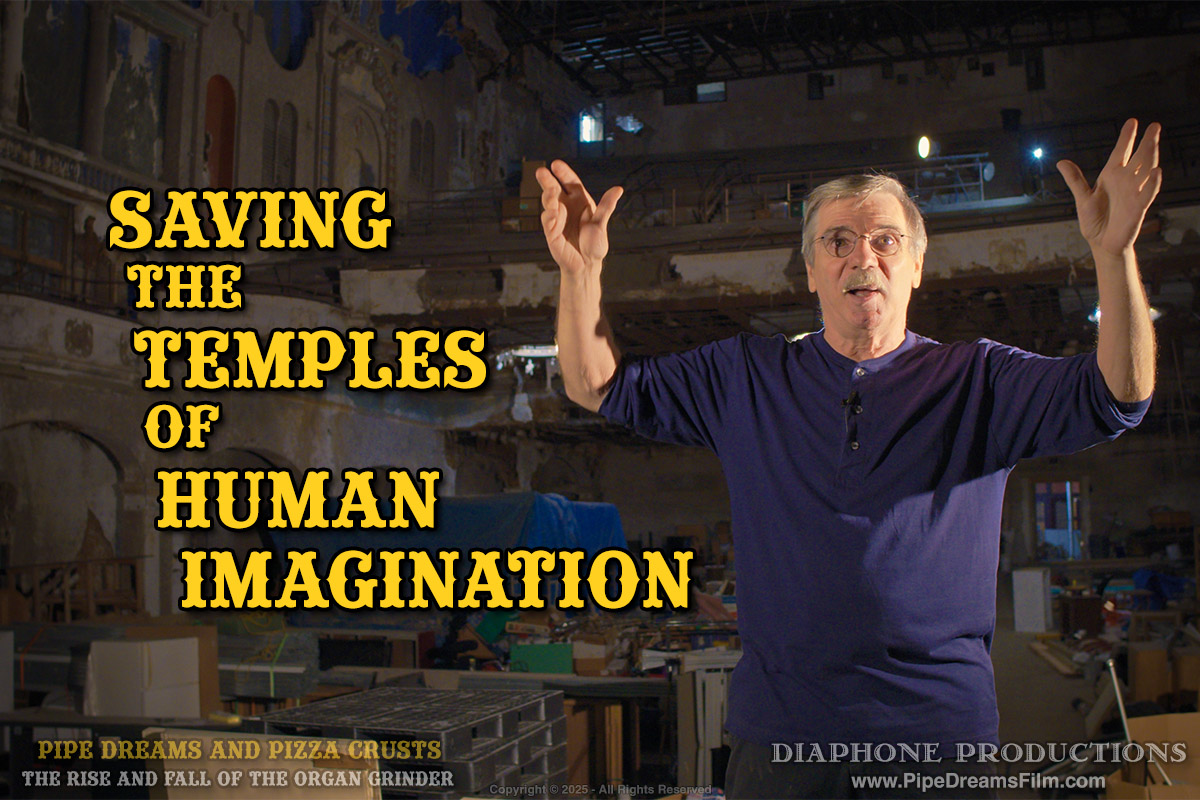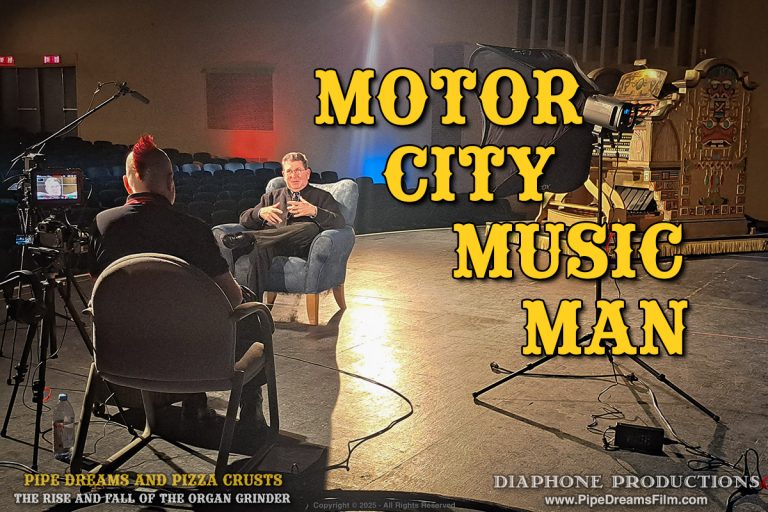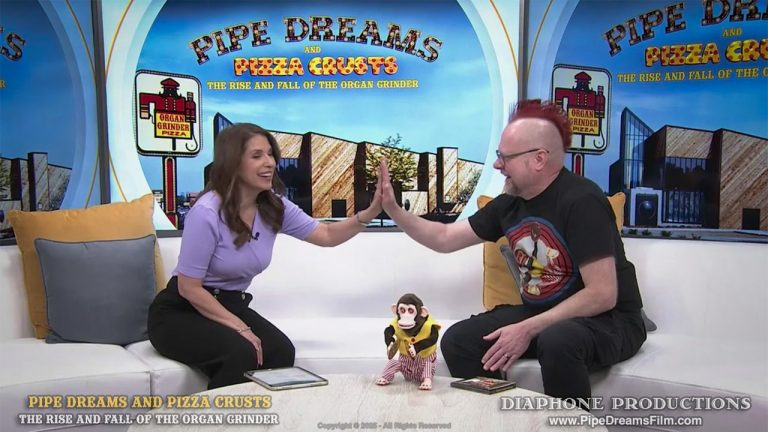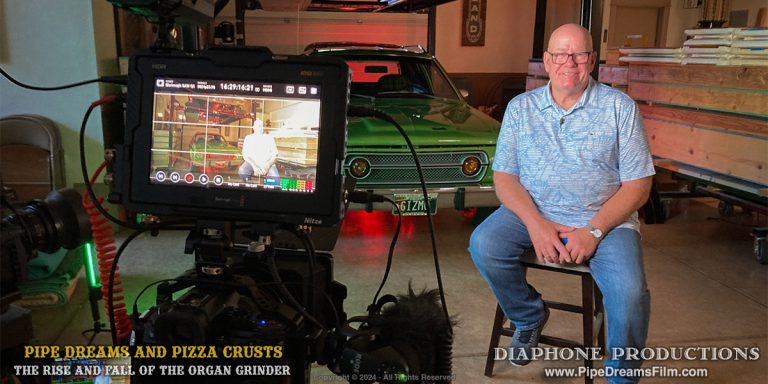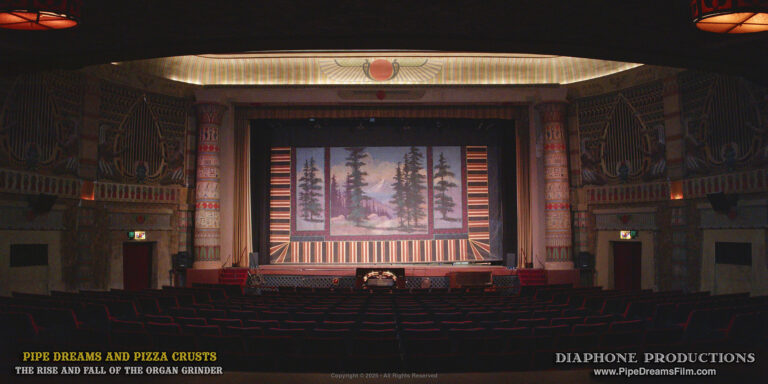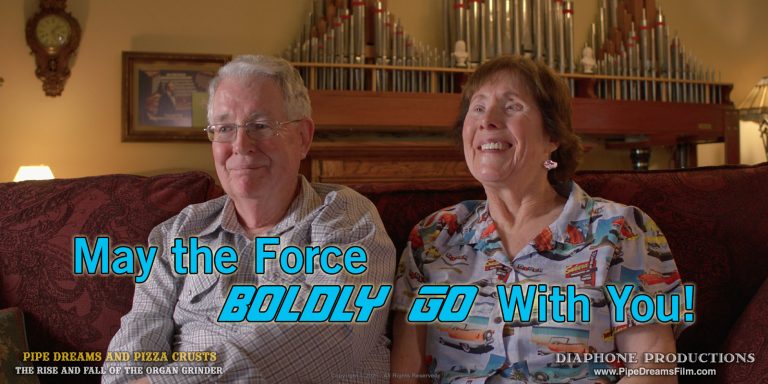Jeff Baas is a man on a mission. A mission to save one particular movie palace, and a broader mission to preserve the history of all of them – and the legacy of one of their greatest proponents.
You can’t tell the story of the Organ Grinder and all the other “pizza and pipe organ” restaurants, without also telling the story of the movie palace. Paradoxically, without the decline of movie palaces, and the disposal of so many of their once-touted theatre pipe organs, there would be no beloved pizza places.
Jeff owns the Kenosha Theatre in Wisconsin, which he has been gradually restoring (often single-handedly) since the mid-1980s. We visited Jeff at the theatre during our return to the Midwest in September, and interviewed Jeff as well as filmed a complete “walk & talk” tour, which we hope to release soon.
Jeff shared a bold yet concise description of movie palaces during his interview:
There are only three types of buildings that bring people together. And those are Stadiums, Churches, and Theaters. And this one, Movie Palaces, more than any of them, are where we celebrate human imagination. And I think there’s something powerful about all these people in one room experiencing human imagination. Like in a church, you’re experiencing faith. In a sports facility, you’re experiencing human endurance, et cetera. But here, we celebrate imagination!
Jeff’s quest to restore the 2,500 seat venue that once hosted the likes of Nat King Cole, Bing Crosby, the Tommy Dorsey Band, Harry James, Frank Sinatra, Lawrence Welk and other well-known performers, has been very challenging, to put it mildly.
Shortly after purchasing the building, and working on obtaining nonprofit and civic funding for its restoration, Chrysler chose to shut down several plants, including ones once belonging to American Motors Corporation, which devastated the Kenosha economy. The promises of funding rapidly dried up.
The theatre had one lifeline – it was originally constructed with an attached apartment building. Over time, the revenue from these apartments allowed for structural and plumbing improvements to the theatre, but not much work (yet) on the interior.
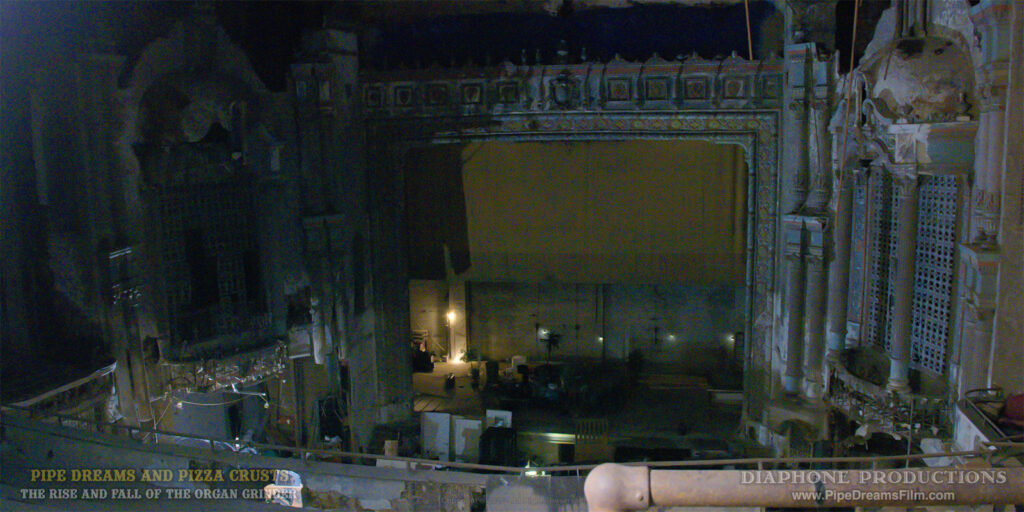
While structurally sound, there is much damage to the decorative plasterwork inside, and much work to be done to install modern requirements such as ADA restrooms on the ground floor – which required installing a new sewer and drain lines, as the original theatre and apartments only had plumbing on the 2nd floor and above. A new roof was installed and, quite ironically, the installation process used by the contractor caused extensive damage to the main auditorium’s ceiling and plaster – way more than any caused by water infiltration through the old roof.
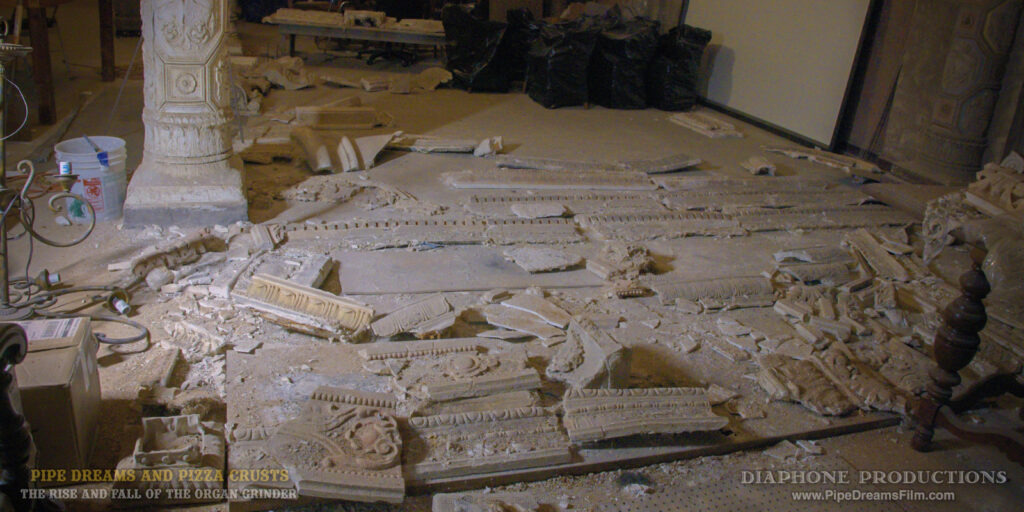
Jeff is using modern approaches to bringing back the elaborate decorations:
They built this place the way they built Hollywood sets back then: With cast plaster. We intend on resurrecting this theater the same way they build Hollywood sets today, and that would be with a CNC machine, 3D scanning this, and carving it all out of high density Styrofoam, covering it with a resin – all the fire code stuff – and build it like they build Hollywood sets today. Because, all they really were, were Hollywood sets.
In the photo above, you can see Jeff’s “Plaster Garden” full of patterns and pieces that need to be sourced from vendors (a few of which are amazingly still around) or 3D-scanned and replicated.
Jeff has a multi-phase plan to reopen sections of the theatre – starting with the entry foyer and lobby, to be used as a small music performance venue and generate revenue, on to restoring the under-balcony area to a modest “black box” theatre, and then eventually the main auditorium. The building has already been used for one noteworthy event – a “goth wedding” in its current very-fitting derelict and spooky atmosphere.
But wait – there’s more – it’s not just this particular piece of Kenosha history that Jeff is trying to preserve. Jeff has also inherited the extensive archive that once belonged to his friend Ray Shepardson. Ray was the unseen-hand that guided numerous movie palace restorations in North America over several decades. Ray is responsible for many theatres now being well-attended concert venues, live theaters, and even (gasp) dedicated movie palaces complete with pipe organs.
Ray’s archive, now protected and organized by Jeff, contains extensive photographs, records, and even original construction blueprints for dozens of movie palaces. In many cases, these are the only records of their construction or preservation. Jeff hopes to digitize this archive and place it online for all to peruse int he future.
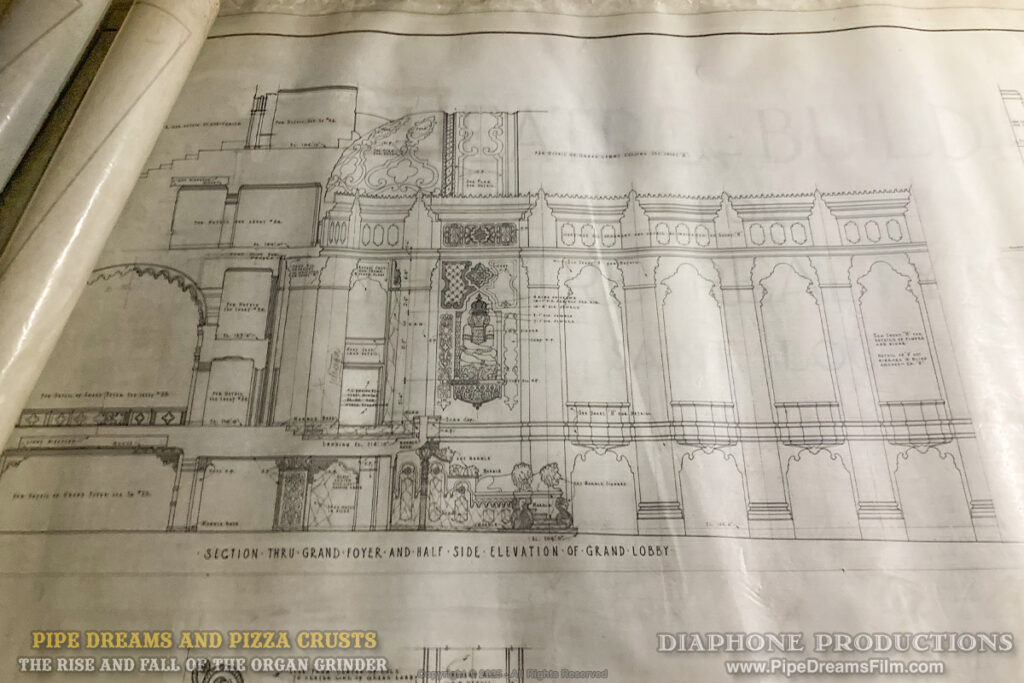
Above you can see an excerpt from the construction drawings for the St. Louis Fox Theatre, which is a near-twin to the Detroit Fox. Jeff hopes to digitize several of these very-large drawings and reproduce them as posters, to be sold as a fundraiser for the Kenosha’s restoration.
There’s one additional bit of news to report: When we first posted to our Facebook Group about visiting the Kenosha Theatre, a group member chimed in that they are the current owners of the Kenosha’s original Wurlitzer pipe organ, which is now in storage. We’ve connected the organ’s owner with Jeff. While the theatre is currently in no condition to have a pipe organ reinstalled, perhaps after the heavier construction work is completed, the Wurlitzer can be reunited with its true home, and make this Temple of the Imagination resonate with music once again.
You can help support the project by purchasing from the Crowdfunding Shop.

